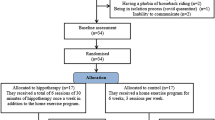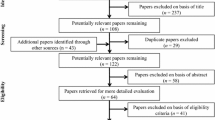Abstract
Reaching for an object in space forms the basis for many activities of daily living and is important in rehabilitation after stroke and in other neurological and orthopedic conditions. It has been the object of motor control and neuroscience research for over a century, but studies often constrain movement to eliminate the effect of gravity or reduce the degrees of freedom. In some studies, aging has been shown to reduce target accuracy, with a mechanism suggested to be impaired corrective movements. We sought to explore how such changes in accuracy relate to changes in finger, shoulder and elbow movements during performance of reaching movements with the normal effects of gravity, unconstrained hand movement, and stable target locations. Three-dimensional kinematic data and electromyography were collected in 14 young (25 ± 6 years) and 10 older adults (68 ± 3 years) during second-long reaches to 3 targets aligned vertically in front of the participants. Older adults took longer to initiate a movement than the young adults and were more variable and inaccurate in their initial and final movements. Target height had greater effect on trajectory curvature variability in older than young adults, with angle variability relative to target position being greater in older adults around the time of peak speed. There were significant age-related differences in use of the multiple degrees of freedom of the upper extremity, with less variability in shoulder abduction in the older group. Muscle activation patterns were similar, except for a higher biceps-triceps co-contraction and tonic levels of some proximal muscle activation. These results show an age-related deficit in the motor planning and online correction of reaching movements against a predictable force (i.e., gravity) when it is not compensated by mechanical support.










Similar content being viewed by others
Data availability
The datasets generated during and/or analyzed during the current study are available from the corresponding author on reasonable request. Once published, data may be available in the Database for Reaching Experiments And Models (DREAM) https://crcns.org/data-sets/movements/dream.
Abbreviations
- PEC:
-
Pectoralis superior
- TRP:
-
Trapezius pars descendens
- DLA:
-
Anterior deltoid
- DLM:
-
Medial deltoid
- DLP:
-
Posterior deltoid
- BIC:
-
Biceps brachii
- TRI:
-
Triceps long head
- FCU:
-
Flexor carpi ulnaris
- EDC:
-
Extensor digitorum communis
- TMS:
-
Transcranial magnetic stimulation
- EMG:
-
Electromyography
- UT:
-
Upper target
- MT:
-
Middle target
- LT:
-
Lower target
References
Bastiaens H, Alders G, Feys P, Notelaers S, Coninx K, Kerkhofs L et al (2011) Facilitating robot-assisted training in MS patients with arm paresis: a procedure to individually determine gravity compensation. IEEE Int Conf Rehabil Robot 2011:5975507
Bennett SJ, Elliott D, Rodacki A (2012) Movement strategies in vertical aiming of older adults. Exp Brain Res 216(3):445–455
Boisgontier MP, Cheval B (2016) The anova to mixed model transition. Neurosci Biobehav Rev 68:1004–1005
Boisgontier MP, Nougier V (2013) Ageing of internal models: from a continuous to an intermittent proprioceptive control of movement. Age (dordr) 35(4):1339–1355
Boisgontier MP, Van Halewyck F, Corporaal SH, Willacker L, Van Den Bergh V, Beets IA et al (2014) Vision of the active limb impairs bimanual motor tracking in young and older adults. Front Aging Neurosci 6:320
Bosch T, de Looze MP, Kingma I, Visser B, van Dieen JH (2009) Electromyographical manifestations of muscle fatigue during different levels of simulated light manual assembly work. J Electromyogr Kinesiol 19(4):e246–e256
Boudrias MH, Goncalves CS, Penny WD, Park CH, Rossiter HE, Talelli P et al (2012) Age-related changes in causal interactions between cortical motor regions during hand grip. Neuroimage 59(4):3398–3405
Coats RO, Fath AJ, Astill SL, Wann JP (2016) Eye and hand movement strategies in older adults during a complex reaching task. Exp Brain Res 234(2):533–547
Elliott D, Hansen S, Grierson LE, Lyons J, Bennett SJ, Hayes SJ (2010) Goal-directed aiming: two components but multiple processes. Psychol Bull 136(6):1023–1044
Flanders M, Soechting JF (1990) Parcellation of sensorimotor transformations for arm movements. Jneurosci 10:2420–2427
Goble D, Coxon J, Van Impe A, De Vos J, Wenderoth N, Swinnen S (2010) The neural control of bimanual movements in the elderly: Brain regions exhibiting age-related increases in activity, frequency-induced neural modulation, and task-specific compensatory recruitment. Hum Brain Mapp 31(8):1281–1295
Gordon J, Ghilardi MF, Cooper SE, Ghez C (1994) Accuracy of planar reaching movements. II. Systematic extent errors resulting from inertial anisotropy. Exp Brain Res 99(1):112–130
Gribble PL, Mullin LI, Cothros N, Mattar A (2003) Role of cocontraction in arm movement accuracy. J Neurophysiol 89(5):2396–2405
Grimm F, Naros G, Gharabaghi A (2016) Closed-loop task difficulty adaptation during virtual reality reach-to-grasp training assisted with an exoskeleton for stroke rehabilitation. Front Neurosci 10:518
Helsen WF, Van Halewyck F, Levin O, Boisgontier MP, Lavrysen A, Elliott D (2016) Manual aiming in healthy aging: does proprioceptive acuity make the difference? Age (dordr) 38(2):45
Heuninckx S, Wenderoth N, Debaere F, Peeters R, Swinnen SP (2005) Neural basis of aging: the penetration of cognition into action control. J Neurosci 25(29):6787–6796
Heuninckx S, Wenderoth N, Swinnen SP (2008) Systems neuroplasticity in the aging brain: recruiting additional neural resources for successful motor performance in elderly persons. J Neurosci 28(1):91–99
Kimura D, Kadota K, Kinoshita H (2015) The impact of aging on the spatial accuracy of quick corrective arm movements in response to sudden target displacement during reaching. Front Aging Neurosci 7:182
Knights E, Morcom A, Henson RN (2021) Does hemispheric asymmetry reduction in older adults (HAROLD) in motor cortex reflect compensation? J Neurosci 132:470
Krüger M, Eggert T, Straube A (2011) Joint angle variability in the time course of reaching movements. Clin Neurophysiol 122(4):759–766
Levin O, Fujiyama H, Boisgontier MP, Swinnen SP, Summers JJ (2014) Aging and motor inhibition: a converging perspective provided by brain stimulation and imaging approaches. Neurosci Biobehav Rev 43:100–117
Lyons J, Hansen S, Hurding S, Elliott D (2006) Optimizing rapid aiming behaviour: movement kinematics depend on the cost of corrective modifications. Exp Brain Res 174(1):95–100
Moubarak S, Pham MT, Moreau R, Redarce T (2010) Gravity compensation of an upper extremity exoskeleton. Conf Proc IEEE Eng Med Biol Soc 2010:4489–4493
Moulias R, Meaume S, Raynaud-Simon A (1999) Sarcopenia, hypermetabolism, and aging. Z Gerontol Geriatr 32(6):425–432
Oldfield RC (1971) The assessment and analysis of handedness: the Edinburgh inventory. Neuropsychologia 9(1):97–113
Poston B, Van Gemmert AW, Barduson B, Stelmach GE (2009) Movement structure in young and elderly adults during goal-directed movements of the left and right arm. Brain Cogn 69(1):30–38
Poston B, Van Gemmert AW, Sharma S, Chakrabarti S, Zavaremi SH, Stelmach G (2013) Movement trajectory smoothness is not associated with the endpoint accuracy of rapid multi-joint arm movements in young and older adults. Acta Psychol (amst) 143(2):157–167
Prange GB, Jannink MJ, Stienen AH, van der Kooij H, Ijzerman MJ, Hermens HJ (2009) Influence of gravity compensation on muscle activation patterns during different temporal phases of arm movements of stroke patients. Neurorehabil Neural Repair 23(5):478–485
Prior SJ, Ryan AS, Blumenthal JB, Watson JM, Katzel LI, Goldberg AP (2016) Sarcopenia is associated with lower skeletal muscle capillarization and exercise capacity in older adults. J Gerontol A Biol Sci Med Sci 71(8):1096–1101
Przybyla A, Haaland KY, Bagesteiro LB, Sainburg RL (2011) Motor asymmetry reduction in older adults. Neurosci Lett 489(2):99–104
Sarlegna FR (2006) Impairment of online control of reaching movements with aging: a double-step study. Neurosci Lett 403(3):309–314
Selya AS, Rose JS, Dierker LC, Hedeker D, Mermelstein RJ (2012) A practical guide to calculating Cohen’s f(2), a measure of local effect size, from PROC MIXED. Front Psychol 3:111
Urbin MA, Tian J, Lafe CW, McKernan GP, Kortzorg N, Wyers L et al (2021) Perturbation of cortical activity elicits regional and age-dependent effects on unconstrained reaching behavior: a pilot study. Exp Brain Res 239:3585
Vandenberghe A, Levin O, De Schutter J, Swinnen S, Jonkers I (2010) Three-dimensional reaching tasks: effect of reaching height and width on upper limb kinematics and muscle activity. Gait Posture 32(4):500–507
Vandervoort AA (2002) Aging of the human neuromuscular system. Muscle Nerve 25(1):17–25
Welsh TN, Higgins L, Elliott D (2007) Are there age-related differences in learning to optimize speed, accuracy, and energy expenditure? Hum Mov Sci 26(6):892–912
Wittenberg GF, Tian J, Kortzorg N, Wyers L, Van Halewyck F, Boisgontier MP, Levin O, Swinnen SP, Jonkers I (2020) Normal aging affects unconstrained three-dimensional reaching against gravity with reduced vertical precision and increased co-contraction. BioRxiv 2020.12.03.410001. https://doi.org/10.1101/2020.12.03.410001
World Medical Association (1964) Human experimentation: code of ethics of the world medical association (declaration of Helsinki). Can Med Assoc J 91(11):619
Funding
This work was supported by USPHS Grant R01 HD061462 and an internal KU Leuven Senior Fellowship Award to GFW (Research Fund KU Leuven, SF/12/005). MPB was supported by the Research Foundation—Flanders (FWO). SPS was supported by Research Foundation—Flanders (G.0708.14N) and Research Fund KU Leuven (C16/15/070).
Author information
Authors and Affiliations
Contributions
Experimental conception and design: GFW, IJ, SPS, OL. Experimental conduct: GFW, NK, LW, FVH, MPB. Data analysis: JT, OL, NK, LW, GFW. Manuscript preparation: GFW, JT. All authors approved the final version of the manuscript.
Corresponding author
Ethics declarations
Conflict of interest
There are no relevant conflicts of interest.
Additional information
Publisher's Note
Springer Nature remains neutral with regard to jurisdictional claims in published maps and institutional affiliations.
Rights and permissions
About this article
Cite this article
Wittenberg, G.F., Tian, J., Kortzorg, N. et al. Normal aging affects unconstrained three-dimensional reaching against gravity with reduced vertical precision and increased co-contraction: a pilot study. Exp Brain Res 240, 1029–1044 (2022). https://doi.org/10.1007/s00221-021-06280-9
Received:
Accepted:
Published:
Issue Date:
DOI: https://doi.org/10.1007/s00221-021-06280-9




